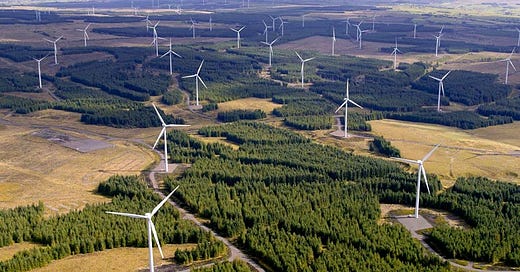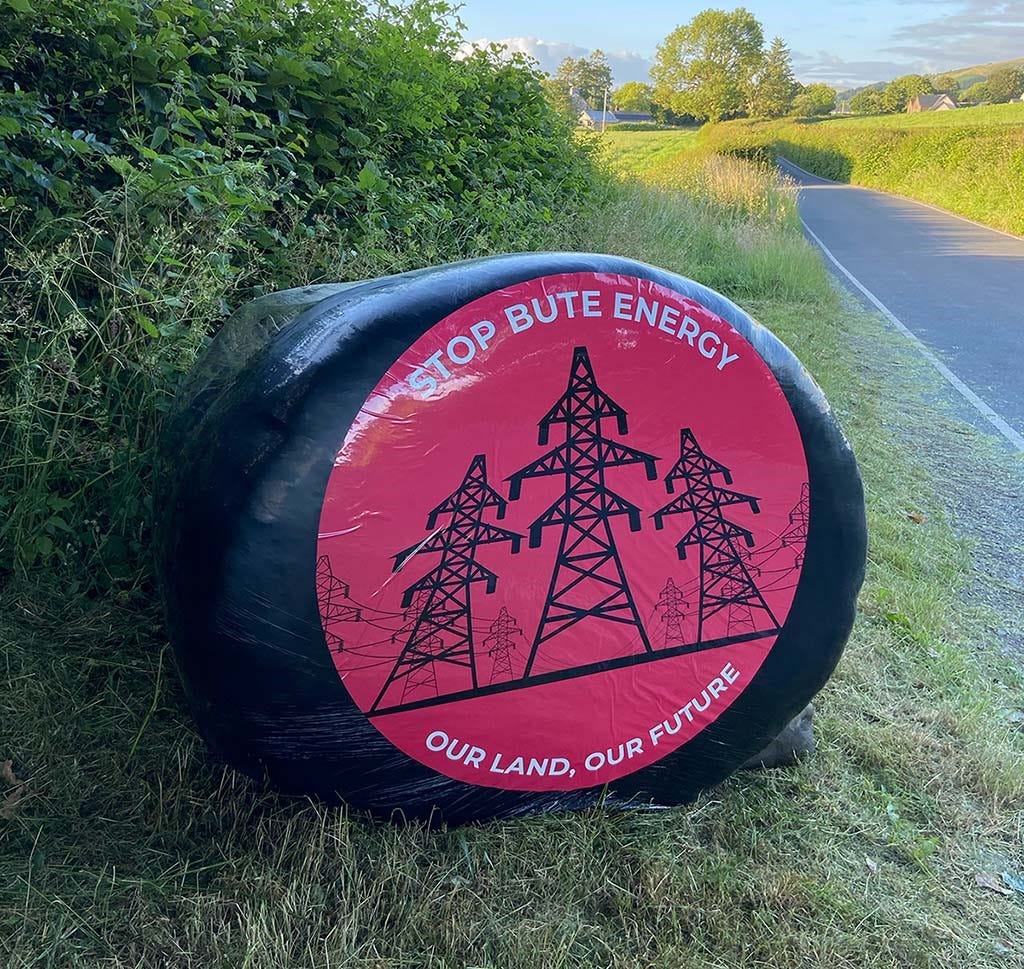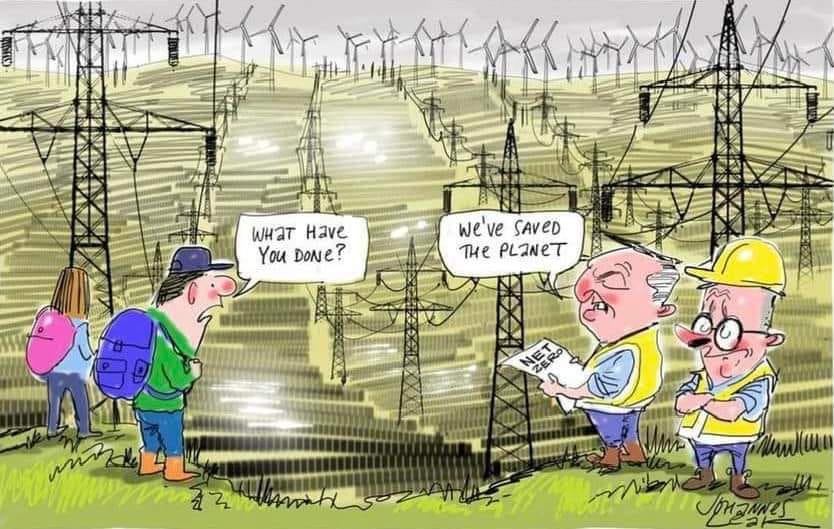Developing onshore wind farms in Wales has sparked significant debate, with communities expressing multiple concerns. They encompass environmental, social, and economic aspects, especially in regions where the natural landscape and rural character are integral to local identity, farming and tourism. Developers backed by foreign investment have eyed the land and embarked on a “Goldrush” of energy park proposals, encompassing wind farms, solar arrays, transmission lines, BESS, and all the associated infrastructure. Some of the main concerns are outlined below.
Visual Impact
Many worry that wind farms will significantly change the aesthetic quality of the Welsh landscape. This concern is particularly poignant in areas with mountainous terrain and wild natural beauty, which are valued for their scenic vistas, cultural heritage and numerous sites of archaeological importance. The potential visual intrusion of turbines is perceived as a threat to tourism since visitors are typically drawn to these areas for their unspoilt countryside and sense of tranquillity. The prominent presence of power lines in a picturesque area at lower levels is regarded as an intrusion due to their scale, health concerns, impact on property values, and disruption of agriculture and natural views.
Impact on Wildlife
Potential harm to wildlife, particularly birds and bats, is also significant. Wind turbines, especially in areas with high populations of these species, present a risk of collision and habitat disruption. The conservation status of certain species heightens the sensitivity of this issue.
Noise Pollution
While wind turbine noise is typically regarded as minimal, it continues to be a contentious issue, particularly for those who live near proposed wind farm locations. Wind turbines produce various persistent sounds, including a "whooshing" sound from the blades and a mechanical hum from the generator, which can be a source of irritation and stress for many individuals. Infrasound is another consideration. As renewable energy generation expands, infrasound from wind turbines will likely increase and could pose a larger issue than previously encountered.
Shadow Flicker
The rotating blades of a wind turbine can periodically block sunlight, casting a moving shadow on the ground or buildings. This effect is most prominent at sunrise and sunset when the sun is low on the horizon. The flicker effect is a particular concern for individuals who suffer from photosensitive epilepsy and experience seizures in response to certain environmental triggers.
Economic Impact on Local Communities
There are concerns that large wind farms could deter tourism, negatively affecting local businesses that rely heavily on tourism income. This would compromise the economic vitality of rural Welsh communities and impact property prices.
Land & Property Ownership
The land required for wind and solar farms is another critical issue. In regions with limited land availability, allocating large tracts for energy production and transmission lines can conflict with other land uses, including agriculture and conservation. It is devastating when compulsory purchase powers threaten the land or property you believe you own. The stress this is causing is immense.
Community Engagement
Communities believe they are not being adequately consulted or involved in the planning process for renewable energy developments, with some developers resorting to bully tactics to gain access to land. This lack of engagement can lead to feelings of significant annoyance and disenfranchisement when their opposition to projects is labelled as “Blockers” and “NIMBYism”.
Government Policy
In 2021, the Welsh Government identified 10 specific areas suitable for onshore wind development in its Future Wales: The National Plan 2040, aiming to balance energy needs with environmental and landscape considerations. However, many proposed wind farm projects are located outside these designated areas, leading to further controversy and challenges.
Communities have raised substantial funds to employ specialists for researching and preparing their environmental impact reports. There is considerable discontent when, despite these reports and advice from the government’s in-house experts, Welsh ministers can overturn a decision to refuse planning consent with one devastating sentence:
“Decision makers must prioritise the Welsh Government's renewable energy targets, as these goals are more important than any potential negative impacts.”
Conclusion
Developing onshore wind farms in Wales presents a complex issue that necessitates careful consideration of all of these genuine concerns. Renewable energy objectives must be balanced with the preservation of natural landscapes, wildlife protection, food security and the well-being of rural communities and their economies. Effective community engagement and adherence to government policies intended to protect and achieve balance are being overlooked, with the emphasis being on “speeding things up.” Maintaining balance is crucial for addressing these issues and fostering sustainable development.







